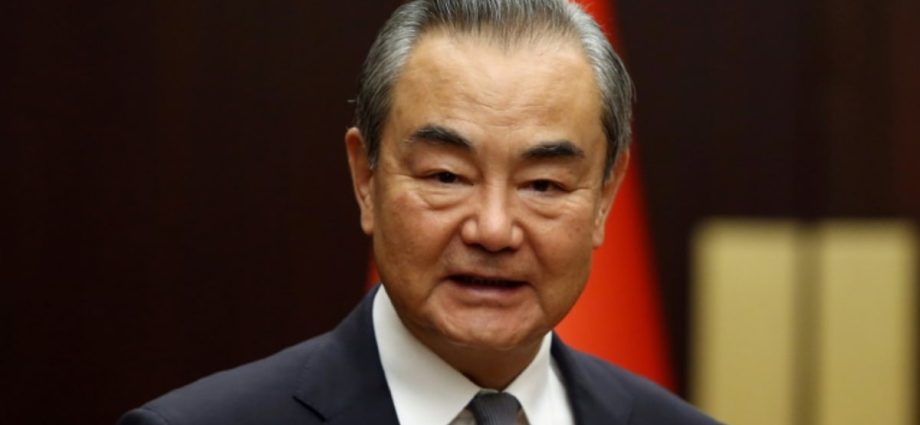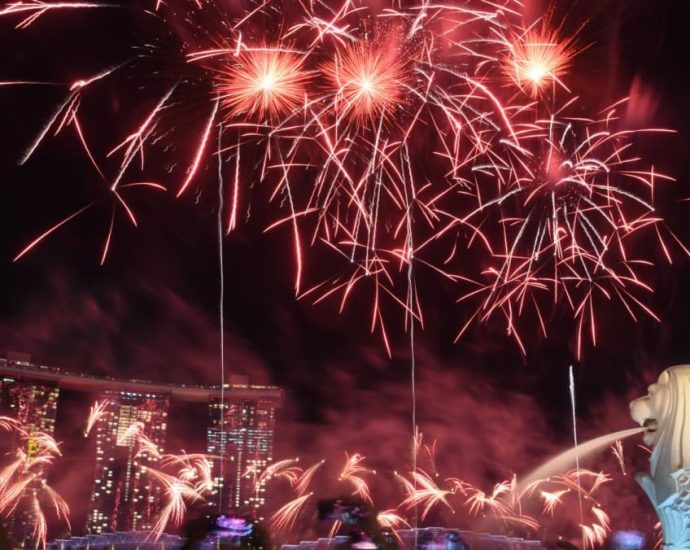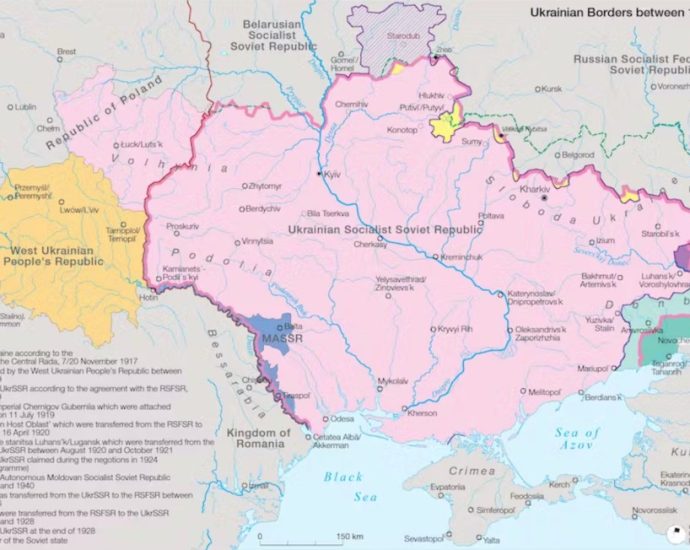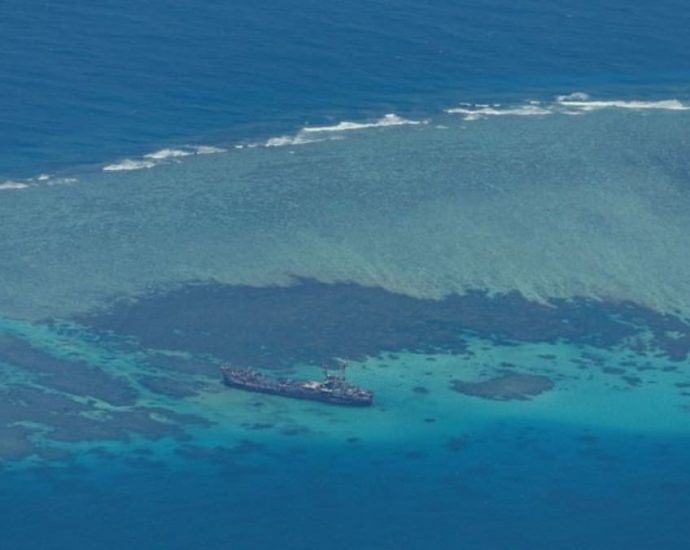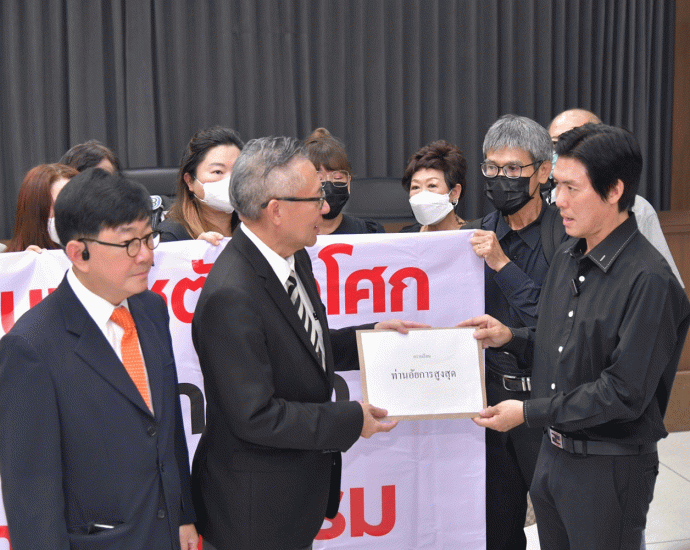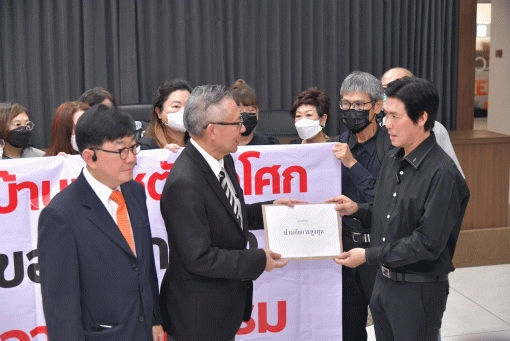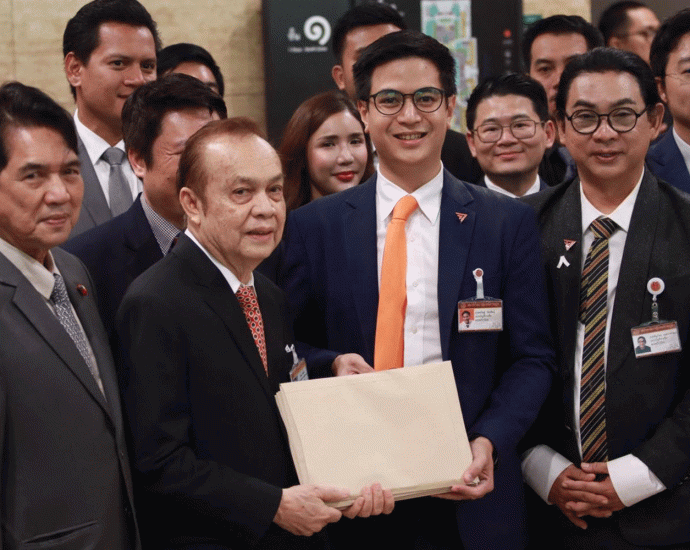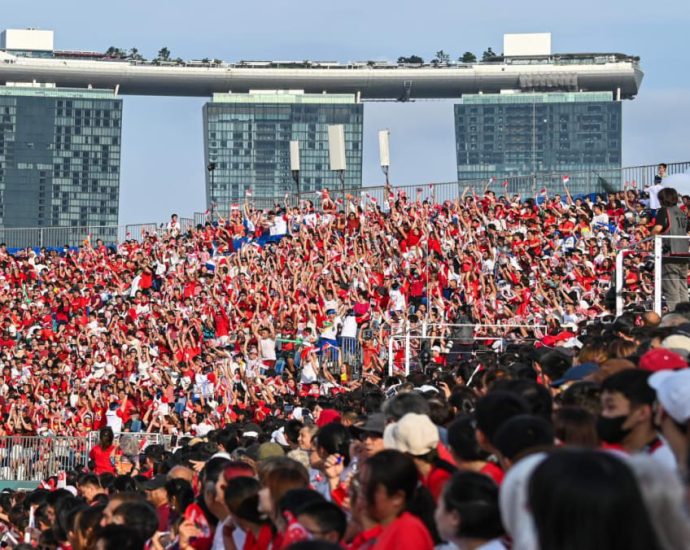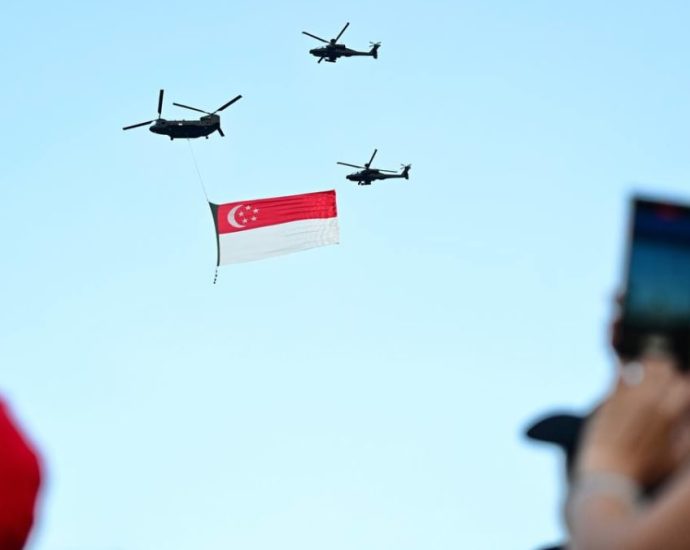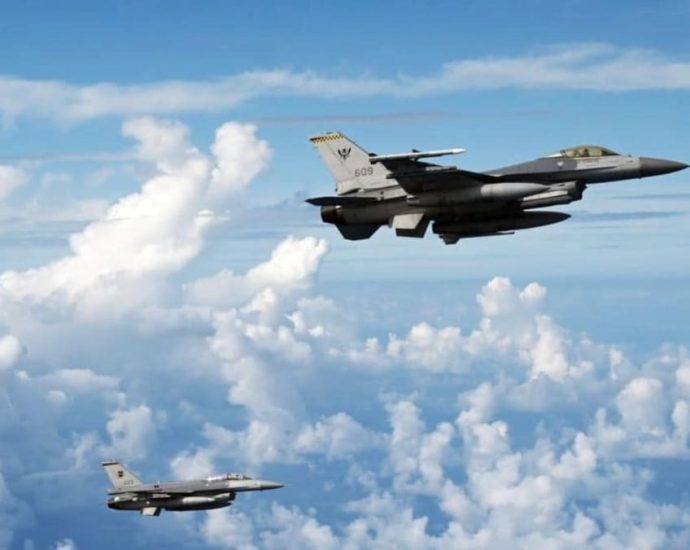China foreign minister Wang Yi to visit Singapore, Malaysia and Cambodia
SINGAPORE: China’s Foreign Minister Wang Yi will visit Singapore, Malaysia and Cambodia this week, Beijing said on Wednesday (Aug 9) as it seeks to build ties in the region. Mr Wang will begin his visit in Singapore from Aug 10 to 11 at the invitation of Minister for Foreign AffairsContinue Reading
Singapore shines its light on the future with NDP 2023
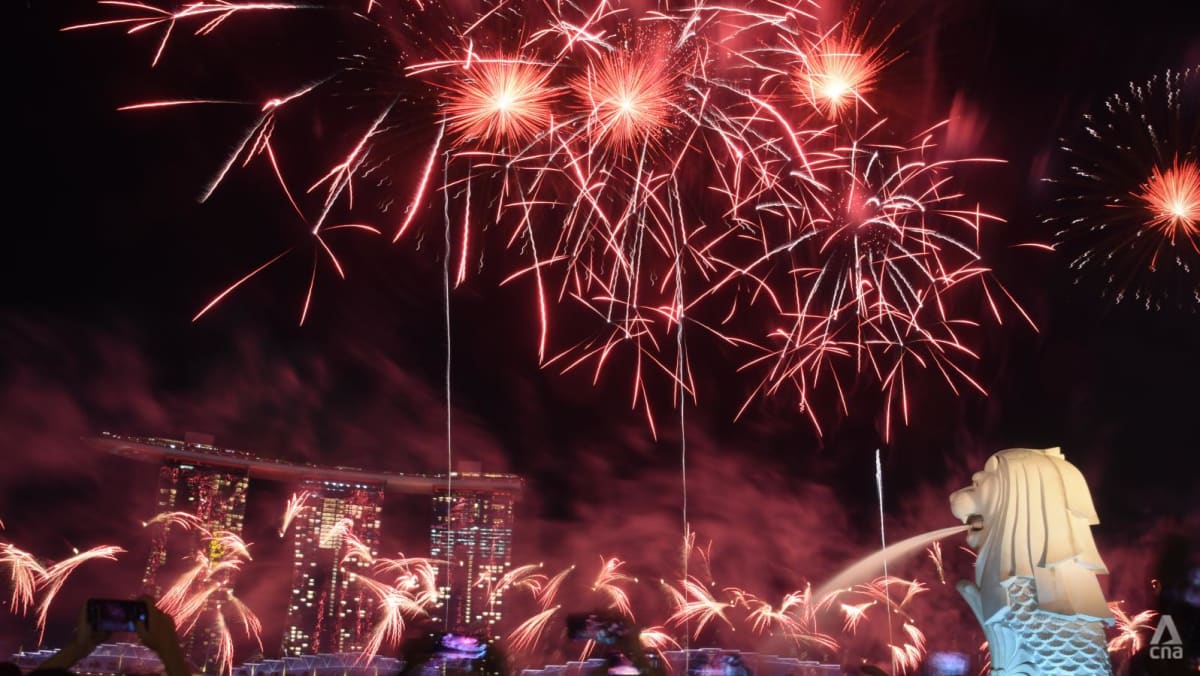
The show soon began with students from Bedok View Secondary School, Deyi Secondary School, East Spring Secondary School and Victoria Junior College in vibrant costumes dancing to this year’s theme song, Shine Your Light, and easing the crowd into the programme.
This year, a total of 2,400 performers and 43 artistes were involved, with students and community groups converging from various schools, ministries and organisations to make NDP happen.
Another 400 students from tertiary institutions contributed as audience motivators, make-up artists and content creators, and they could be seen dotted throughout the stands, dancing to songs tirelessly throughout.
Speaker of Parliament Seah Kian Peng and Members of Parliament were welcomed to the NDP and made their way onto the stands from the National Gallery.
Shortly after 6pm, a crowd favourite, the military free fall segment was conducted by the Red Lions, with eight descending from a transport aircraft in aerial formation and taking minutes to reach the ground. The crowd waited with bated breath, last year’s mishap involving a Red Lion in an awry landing on everyone’s minds.
Each Red Lion landed, within seconds of the other, smoothly and to ecstatic cheers and applause from the crowd.
Partition-based ceasefire wonât work in Ukraine
Even as Ukraine’s counteroffensive pushes slowly forward, some observers are calling for the warring sides to negotiate a ceasefire. This would create a de facto demarcation line separating areas held by Ukrainian forces from those under Russian control at the moment the fighting stops.
Others argue, however, that a ceasefire is unlikely to lead to a durable settlement. For Ukraine, a truce would mean giving its adversary time to regain strength for renewed aggression, while abandoning its citizens to the horrors of occupation in Russian-controlled areas.
Establishing a provisional line of separation would break up long-established administrative and economic structures. This would indefinitely prevent the divided regions from rebuilding and restoring their inhabitants’ security and welfare.
To understand this, let’s look back at how Soviet leaders drew the border between Russia and Ukraine. It was this border that Ukraine inherited in 1991 after the dissolution of the Soviet Union.
And it was this border that Russian President Vladimir Putin denounced on the eve of Russia’s full-scale invasion of Ukraine in 2022, declaring that modern Ukraine was a historical mistake arising from early Soviet border-making policy.
Map 1. Ukraine in 1991:

As research has shown, Russian and Ukrainian communists who in 1919 mapped out the border between Ukraine and Russia took as their starting point the former Russian empire’s provincial boundaries.
These had evolved haphazardly over centuries and reflected neither the geographical distribution of Ukrainian and Russian speakers nor economic considerations, such as transport links, the location of industries or flows of goods to markets.
Over the next decade, Moscow repeatedly moved the border with the aim of shaping a Ukrainian Soviet Republic that, while retaining a majority Ukrainian-speaking population, could also build a strong and sustainable economy. This meant drawing borders to facilitate rational planning and the integrated development of industry and agriculture.
In some cases, the Soviet authorities involved local officials and residents in border-making. Regional interests, however, were always subordinated to the needs of the Soviet economy and the imperative of maintaining central political control.
Map 2: Ukrainian borders between 1917 and 1938

For example, the districts of Shakhty and Taganrog were initially incorporated in the Ukrainian Soviet Republic as they had a majority of Ukrainian speakers. In 1924, however, they were transferred to the Russian Soviet Federative Republic (RSFSR) for economic reasons.
By contrast, Putivl’ district had been allocated in 1919 to the RSFSR, as most of its population was Russian-speaking. Despite this, in 1926 the district was integrated into Soviet Ukraine after Ukrainian officials and local residents made the case that its markets and transport links were within that republic.
In 1954 Soviet leader Nikita Khrushchev transferred the Crimean peninsula to Ukraine. However, this was not a “gift”, as commonly reported, and even less an “exceptionally remarkable act of fraternal aid” on the part of the Russian people, arising from its “generosity” and its “unlimited trust and love” of Ukrainians, as Soviet politicians at the time declared.
Rather, as recent analysis shows, it was a strategic decision with multiple motives. Khrushchev aimed to reinforce central Soviet control over Ukraine by incorporating Crimea’s large ethnic Russian population, after a decade of Ukrainian nationalist insurgency in the newly annexed western regions.
At the same time, Khrushchev hoped the transfer would win him the support of Ukrainian communist elites, bolstering his bid for supreme power in the factional struggle that erupted after Stalin’s death in 1953.
Construction of a vast irrigation system unifying Crimea and southern Ukraine was already underway, to be fed with water from the Kakhovka reservoir on the Dnipro River via the North Crimean canal. For the purposes of planning and carrying out this mega-project, only completed in the mid-1970s, the transfer of Crimea to Ukraine also made economic sense.
Border-making across the Soviet Union attempted similarly to balance many different, often competing, criteria. Where these borders were drawn to a large extent determined the subsequent course of Soviet history and, since 1991, has shaped the internal development and external relations of states and societies across post-Soviet space.
Invasion and annexation
In February 2022, Russia launched its full-scale invasion of Ukraine, seeking to revise the post-1991 border settlement. By that summer its army had occupied large parts of the four eastern Ukrainian regions of Donetsk, Luhansk, Kherson and Zaporizhzhia.
In September, on the Kremlin’s orders, Russian-installed leaders of these regions organized a series of plebiscites. These asked residents in occupied areas if they wished their region to become part of the Russian Federation.
Voting took place watched by armed soldiers and counting was unmonitored. The polls – denounced by UN officials as “illegal” – unsurprisingly yielded vast majorities in favor of joining Russia.

On September 30, 2022, Putin declared Russia’s annexation of these regions. Four days later the Russian state Duma ratified this.
However, even at the moment of annexation large parts of these territories remained under Ukrainian control or were threatened with imminent recapture. In November, the Ukrainian army liberated the city of Kherson.
Its 2023 counteroffensive is now slowly but steadily taking back land in several areas of the annexed regions.
New state borders?
Where, then, does Russia intend to draw its new state borders? In September 2022, Putin’s spokesman Dmitry Peskov refused to give any answer to this.
He reiterated only that Russia had recognized the independence of the Luhansk and Donetsk People’s Republics within the Ukrainian regional borders that had existed before the declaration of these Russian proxy administrations in 2014.
This implied that Russia envisaged incorporating these regions in their entirety. He said nothing about Kherson and Zaporizhzhia.
A ceasefire along a Korea-style demarcation line would fracture the unified territory that Ukraine inherited in 1991. Over and above the political, strategic, legal and moral objections to an armistice that entrenches territorial partition, this outcome would cause intractable economic problems.
Whether a truce held for a few months or many years, it would continue to prevent external investment in the divided regions, draining state resources and preventing vital reconstruction.
A stopgap solution without a permanent settlement – a peace treaty – will only create conditions for further suffering and future conflict.
Nick Baron is Associate Professor in History, University of Nottingham and Stephan Rindlisbacher is Academic Research Fellow at the Center for Interdisciplinary Polish Studies, European University Viadrina
This article is republished from The Conversation under a Creative Commons license. Read the original article.
Philippine president says no promise made to China to remove grounded warship
MANILA: Philippine President Ferdinand Marcos Jr on Wednesday (Aug 9) denied making an agreement with China to remove a grounded warship that serves as a military outpost in the South China Sea, and said if there ever were such a deal, it should be considered rescinded. The Philippines maintains aContinue Reading
Tenants promised aid in Asoke condo drama
PUBLISHED : 9 Aug 2023 at 18:10

Prosecutors have pledged to help tenants of the Ashton Asoke condominium in Watthana district after its building permit was withdrawn.
Twenty tenants led by Pornchai Lertsathittayapong sought legal assistance from the Office of the Attorney General (OAG) on Wednesday, after the 6-billion-baht luxury condo’s permit was retroactively withdrawn by the Supreme Administrative Court earlier due to the property’s main entrance having failed to meet the standard width.
The already-finished 50-storey condo in Bangkok’s business district also faces the prospect of being demolished if its developer fails to rectify the entrance problem in time.
Tenants have been asking for legal help from various parties and agencies. They on Wednesday handed their petition to Tharam Chaleechan, the OAG spokesman, and Kosolwat Inthachanyong, deputy head of the OAG’s office for rights protection and legal assistance.
Mr Tharam said the office has a role to play in providing consumer protection and legal counselling to the tenants.
Mr Kosolwat said the entrance issue may be solved through consultation with the Bangkok Metropolitan Administration (BMA).
Also, the tenants should try to work out a solution with the condo developer, Ananda MF Asia Asoke Co, he said. If that fails, the OAG’s office for rights protection will step in and offer legal help.
He said the tenants have also submitted their petition to the House committee on consumer protection, which has called a meeting to discuss their plight. The House committee has also invited the OAG’s office to the meeting.
Mr Kosolwat said the law allows for the issue to be settled through talks between parties involved. If no settlement is forthcoming, the OAG will begin legal action on the tenants’ behalf.
However, Mr Kosolwat said many similar consumer cases in the past were able to be settled without them ever reaching the court.
The prosecutors must inform the parties about their legal options so they can assess their chances of winning or losing in court. This will enable the parties to decide whether to take the matter further.
Last week, the BMA insisted it had approved the construction permit for the Ashton Asoke condo in strict compliance with regulations. The approval was granted as the company had satisfied all the required criteria.
The BMA added there was no need to knock down the condo and tenants were free to remain in the building. The administration will look to see if the condo can build an alternative entrance that meets the required width of 12 metres via either Sukhumvit Soi 19 or Sukhumvit Soi 21.
Residents promised aid in Asoke condo drama
PUBLISHED : 9 Aug 2023 at 18:10

Prosecutors have pledged to help residents of the Ashton Asoke condominium in Watthana district after its building permit was withdrawn.
Twenty residents led by Pornchai Lertsathittayapong sought legal assistance from the Office of the Attorney General (OAG) on Wednesday, after the 6-billion-baht luxury condo’s permit was retroactively withdrawn by the Supreme Administrative Court earlier due to the property’s main entrance having failed to meet the standard width.
The already-finished 50-storey condo in Bangkok’s business district also faces the prospect of being demolished if its developer fails to rectify the entrance problem in time.
Condo owners and renters in the building have been asking for legal help from various parties and agencies. On Wednesday they handed their petition to Tharam Chaleechan, the OAG spokesman, and Kosolwat Inthachanyong, deputy head of the OAG’s office for rights protection and legal assistance.
Mr Tharam said the office has a role to play in providing consumer protection and legal counselling to the residents.
Mr Kosolwat said the entrance issue may be solved through consultation with the Bangkok Metropolitan Administration (BMA).
Also, the residents should try to work out a solution with the condo developer, Ananda MF Asia Asoke Co, he said. If that fails, the OAG’s office for rights protection will step in and offer legal help.
He said the residents have also submitted their petition to the House committee on consumer protection, which has called a meeting to discuss their plight. The House committee has also invited the OAG’s office to the meeting.
Mr Kosolwat said the law allows for the issue to be settled through talks between parties involved. If no settlement is forthcoming, the OAG will begin legal action on the residents’ behalf.
However, Mr Kosolwat said many similar consumer cases in the past were able to be settled without them ever reaching the court.
The prosecutors must inform the parties about their legal options so they can assess their chances of winning or losing in court. This will enable the parties to decide whether to take the matter further.
Last week, the BMA insisted it had approved the construction permit for the Ashton Asoke condo in strict compliance with regulations. The approval was granted as the company had satisfied all the required criteria.
The BMA added there was no need to knock down the condo and residents were free to remain in the building. The administration will look to see if the condo can build an alternative entrance that meets the required width of 12 metres via either Sukhumvit Soi 19 or Sukhumvit Soi 21.
MFP submits 9 bills for promised law reforms
PUBLISHED : 9 Aug 2023 at 17:26

The Move Forward Party (MFP) has submitted nine more bills to parliament as the reformist party pushes for changes it promised supporters while campaigning for the May 14 general election.
The bills are in three sets, the first concerning local administration, the second corruption prevention and the rest are about diversity, according to list-MP Parit Wacharasindhu, who is behind the move.
The party on July 18 submitted two sets of bills, seven in total, to parliament relating to reforms to the armed forces and preventing business monopolies.
The bills about local administrations seek to decentralise planning, regulate land expropriation by the government, clarify rules on land acquisition, and bring improvements to land transport and roads, he said.
There are also two bills meant to help prevent corruption – one on public information and the other to streamline the process of getting permits from state agencies, the MFP MP said.
The last three bills are meant to boost inclusivity and diversity in society – a proposd amendment to the Civil and Commercial Code to allow same-sex marriage, a bill on gender certification and protection of gender diversity, and a bill to promote the rights of ethnic minorities and indigenous people.
Tunyawaj Kamolwongwat, an MFP list-MP who proposed the marriage equality bill, said the MFP’s previous push for marriage equality is at risk of being dropped, so a new bill on marriage equality is needed.
The old bill, presented to the previous parliament, will automatically lapse if the new parliament does not take it up again for deliberation by early next month, she said.
MFP list-MP Manop Keereepuwadol, who chairs MFP’s network of ethnic minorities and indigenous people, said a similar push to protect the rights of ethnic minorities and indigenous people was rejected by the previous parliament. The bill had been adjusted and re-submitted for consideration, he said.
Two of the seven bills submitted on July 18 have since been found to require preliminary approval by caretaker Prime Minister Prayut Chan-o-cha, as they concern state finances, Mr Parit said.
One bill seeks to end mandatory military conscription and the other seeks to dissolve the Internal Security Operations Command (Isoc), he said, and asked Gen Prayut to consider approving both of them.
Watch live: National Day Parade 2023 at the Padang
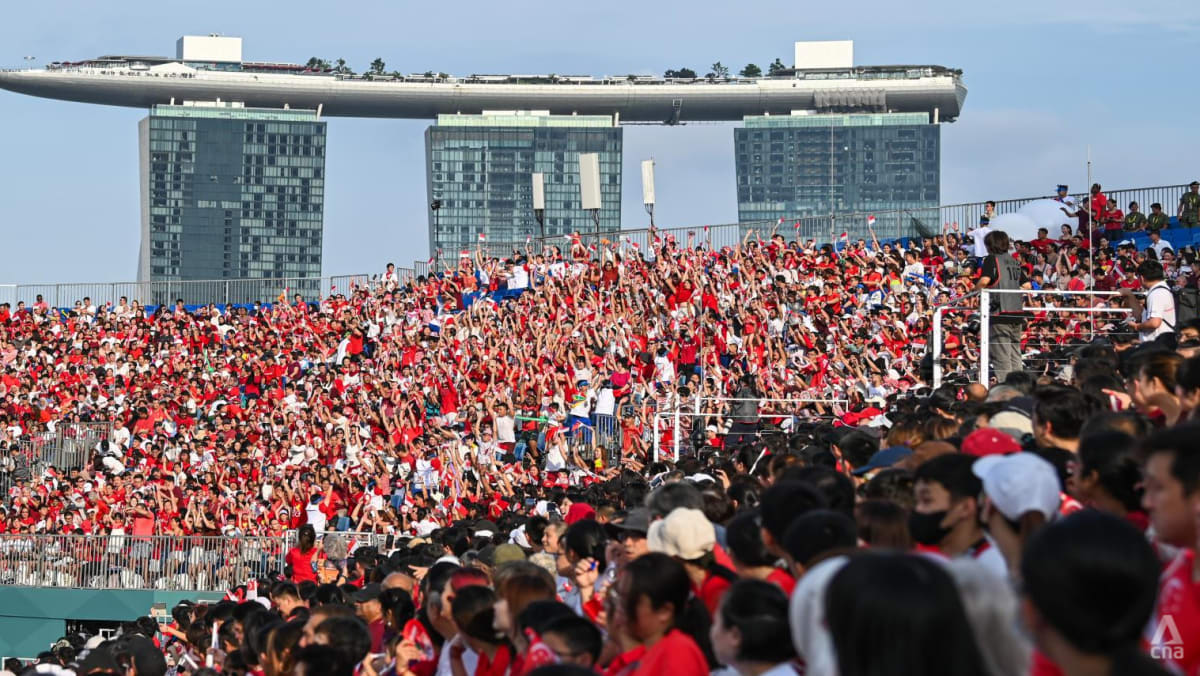
SINGAPORE: Singapore marks its 58th year of independence on Wednesday (Aug 9), with a national day parade at the Padang.
The live broadcast of the parade starts at 5.55pm and it will be shown live on CNA. This theme of this year’s parade is “Onward As One”.
Expect to see an enhanced aerial display to mark the Republic of Singapore Air Force’s (RSAF) 55th anniversary. The RSAF’s C-130 transport aircraft will fly the Red Lions over the Padang for a free fall segment.
The NDP Show comprises four live acts featuring 43 artistes and 2,400 performers. The creative director for the parade is filmmaker Royston Tan.
Watch: National Day Parade 2023 at the Padang
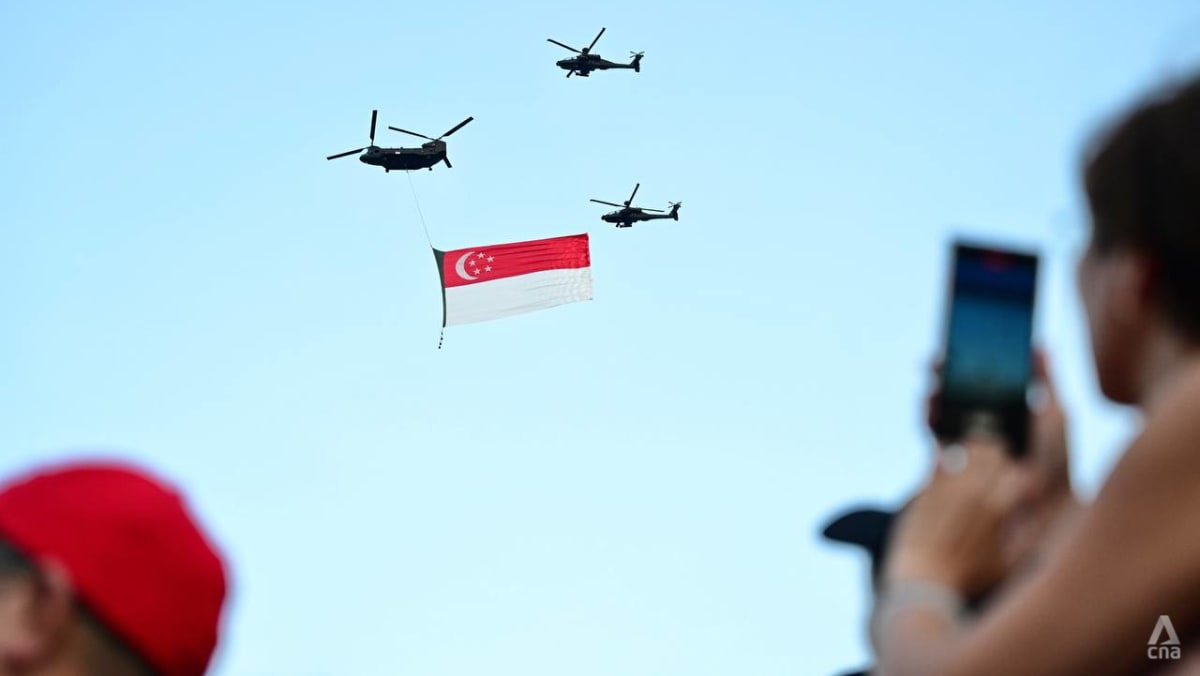
SINGAPORE: Singapore marked its 58th year of independence on Wednesday (Aug 9) with a national day parade at the Padang.
The theme of this year’s parade is “Onward As One”.
It was a visual spectacle as the Red Lions performed a free fall, landing safely to cheers from the crowd.
And to commemorate the Republic of Singapore Air Force’s (RSAF) 55th anniversary, an enhanced aerial display flew in formation across the heartlands, bringing the action closer to people at home.
Highlights from the parade:
Singapore scrambles F-16 jets in response to civilian helicopter, Changi Airport operations briefly affected
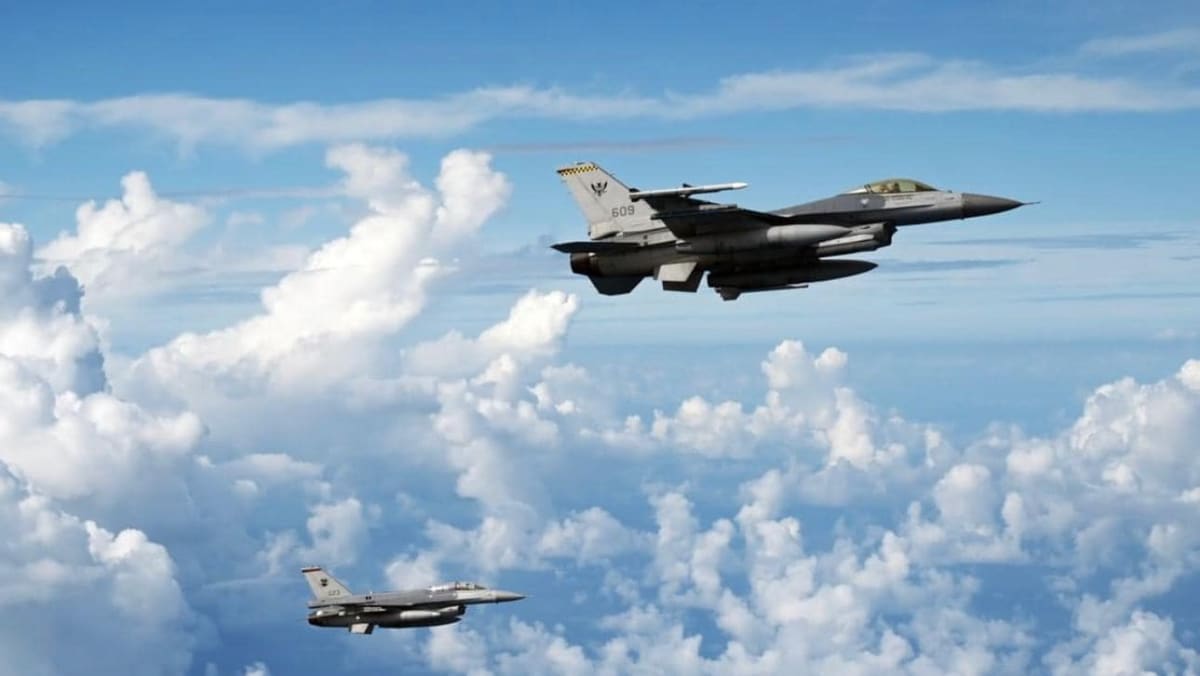
SINGAPORE: The Republic of Singapore Air Force (RSAF) scrambled two F-16 jets on Wednesday afternoon (Aug 9) in response to a civilian helicopter, said the Ministry of Defence (MINDEF) and Civil Aviation Authority of Singapore (CAAS).
“Preliminary checks indicate that the helicopter is of a civilian type and registered to a foreign company,” they added.
“After ensuring that our security was not compromised, the F-16s were subsequently stood down.”
The fighter jets were deployed at about 12.40pm.
Operations at Changi Airport were affected for about 40 minutes, between 12.50pm and 1.28pm, said the authorities.
A total of nine arrival flights and 11 departure flights experienced some delay.
MINDEF and CAAS were responding to CNA’s queries after the @alert5 account on X, the social media platform formerly known as Twitter, posted about an incident at 1.10pm.
Using online flight tracking service Flightradar24, the account user said fighter jets had been scrambled in response to a “Malaysian-registered helicopter” entering airspace off Changi Airport.
Defence journalist Roy Choo added on X that the F-16s were scrambled from Tengah Airbase and that the Malaysia-registered aircraft in question was a civilian AS350 or Squirrel helicopter.

